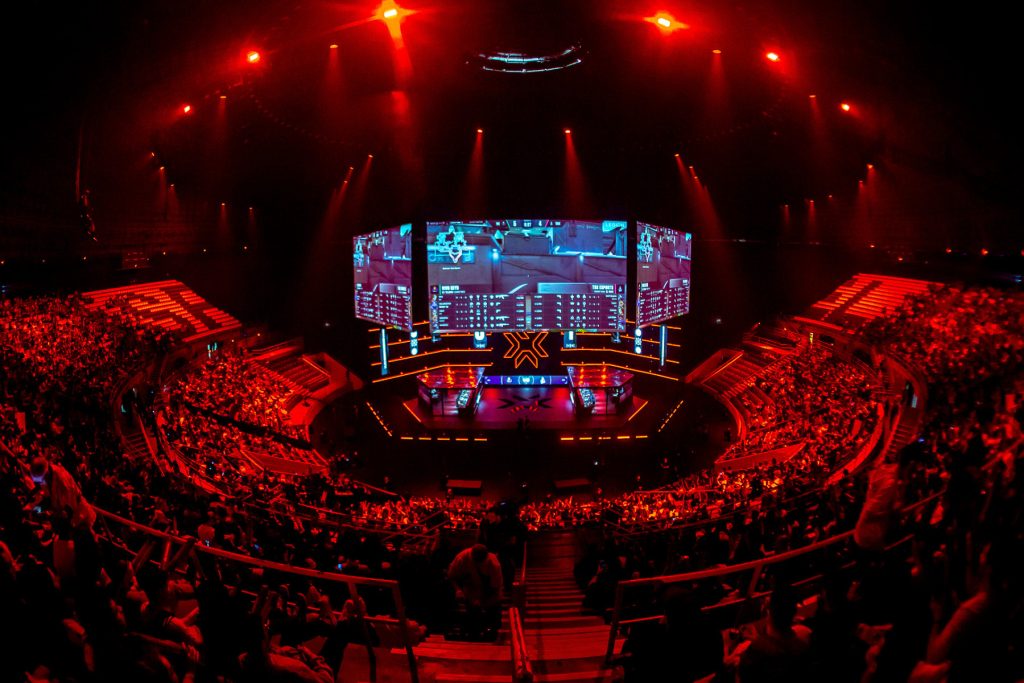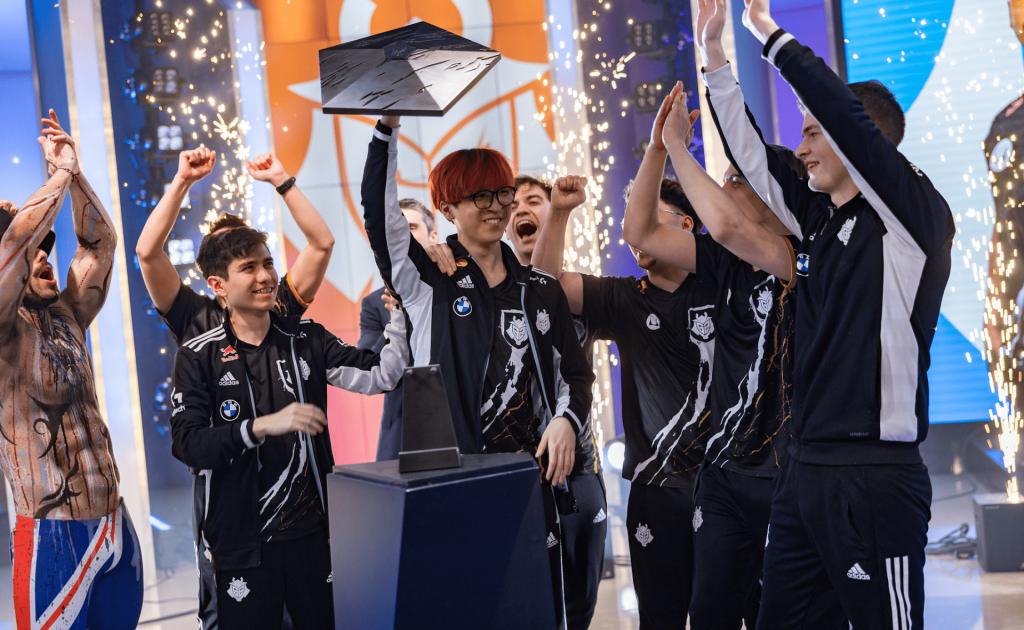
John Needham, the President of Esports at game publisher Riot Games, published on April 19th a sweeping — and revealing — blog post outlining Riot’s esports philosophy.
The post offers a far-reaching, unusual glance into Riot Games’ approach to esports at a critical time for the industry.
It is simultaneously both predictably corporate and unusually unrestrained; laden with carefully designed messaging, yet also replete with surprisingly frank admissions for one of esports’ most consequential stakeholders.

Value in esports
The central messaging of the blog post is that Riot Games believes ‘whole-heartedly’ in the underlying financial viability of esports. It addresses where esports sits in Riot’s business plan, and how it sees the industry more generally — especially important now, Needham tellingly admits, as a “looming recession and uncertainty about the business of esports” impacts the ability of teams in its ecosystems to secure capital and sponsors.
League of Legends franchise teams, who initially bought slots for $10m (~£8m) in 2017, receive 50% of league revenues, a percentage of digital sales for esports content, and prize pool money, Needham said. But those revenue streams haven’t lived up to expectations. Riot’s President of Esports admitted that “selling sponsorships and chasing broadcast licence deals was a new thing at Riot and, admittedly, it took us longer to source meaningful revenues.”
Surprisingly, Needham seemingly acknowledged that it was because of the influx in capital that teams needed to attract in order to afford Riot’s franchise league fees that player salaries ballooned unsustainably, resulting in the depleted cash reserves causing headaches across the industry today.
As a result, Needham revealed that Riot has implemented minimum guarantees on teams’ 50% revenue share, accelerated payments, and deferred cash payments owed by teams. The VALORANT VCT partner programme, which has no buy-in fees, was borne out of these lessons — a deft solution that decreased the capital required for teams to enter.
Yet despite its acknowledgement of the issues facing the esports industry, Riot Games’ comprehensive, perhaps slightly verbose, ode to esports has seen a mixed reception.
“I felt the Riot blog post was important in the fact that, for the first time that I remember, a major publisher openly and candidly spoke about the challenges our industry is facing,” Jacob Wolf, esports journalist and CEO of media company Overcome, told Esports Insider.
“That said, it felt like it was too little too late and I felt that it did what many people in our industry do: it addressed the issues, but downplayed the severity of the problem,” Wolf continued. “I know Riot mentioned it’s planning to assist teams more in 2024, but what about right now? There are teams who won’t make it to 2024 because of the current difficult fundraising market.”
Revenue streams
Riot’s blog post was frank about its view that media rights — both via streaming and linear TV — simply won’t work in esports. “Linear television is not, and has never been, a good channel for esports content because there is a fundamental audience mismatch,” Needham said, opening up on the difficulty even Riot has had in making meaningful streaming revenue. “Despite generating billions of hours of viewership from a highly valuable audience, Riot receives de minimis [negligible] streaming platform revenues in the West.”
In lieu of broadcast rights, Riot Games is leveraging its direct connection with viewers. Up to 40% of its audience uses its Lolesports.com watch platform, Needham disclosed, which lets sponsors connect with fans virtually via rewards and drops. Riot plans to go further by utilising data held on its logged-in fans to better monetise them — for example by pushing a T1 fan pass to a viewer who favours watching T1’s matches.
Amongst the biggest revelations in the post was that Riot Games is soon to debut a Virtual Pass for major events, a form of team-specific virtual ticketing. The Virtual Pass will help teams generate revenue via in-game microtransactions, a burgeoning revenue stream for teams that developers like Riot Games are increasingly leaning into.
Indeed, Riot claims this focus on digital items and monetising its connection with viewers is working. Three of the top six best-selling League of Legends skins are esports-themed, and in 2022 VALORANT sold $42m (~£33.7m) in skin bundles, half of which went to teams. “Having the ability to sell esports digital goods and services directly to viewers will provide a scalable revenue source that should fill the hole left by the lack of broadcast licences,” Needham posited.
But selling more virtual items in order to plug the multi-billion dollar hole that broadcast licensing rights bring to traditional sports leagues is a tall order. Most major sports leagues generate billions of dollars per year in media rights. The NFL alone is set to make $113bn (~£90.6bn) in media rights through to 2033. “Replacing broadcast licences with targeted ads is expecting a lot,” Dexerto reporter Declan McLaughlin quipped on Twitter in response to the blog post.
The blunt focus, too, on how Riot plans to better extract value from its community may not sit well with fans, Brendan Husebo, a marketing analyst and ex-Fnatic social media manager, told Esports Insider. “It’s a sales deck,” Husebo said. “I’m not sure that it’s much of a win for the general fan if all you’re gonna do is say we’re going to make the franchisees who bought into our league system feel better about being here.”
Nonetheless, Riot is confident that advertising can do much of the remaining heavy lifting. Needham asserted that Riot Games “successfully deliver[s] 5-7x our sponsor’s investment back in value,” citing audience analytics partner Nielsen.
A source with knowledge of how Nielson’s esports sponsorship analysis works told Esports Insider that ‘value’ refers to media value — a marketing term that does not necessarily equate to a dollar return on investment — and that the claim was “a little generous, but reasonable.”

‘All in on esports’
Needham’s blog post has won support from some for signalling an intention to help teams build revenue — and, to be sure, Riot’s esports ecosystems are typically considered much healthier than many other publishers’. But for all of Needham’s candidness and grand aims, there is still serious work to be done.
“I don’t believe Riot has all the solutions to these problems and that it’s very much a work in progress,” Jacob Wolf added. “But if you read that blog post without additional context, you’d think this was them pointing out problems they’ve already solved.”
The very fact that Riot felt the need to publish the post in the first place is in itself telling of the times, one industry analyst told Esports Insider. Some on social media have pointed out that Riot is claiming to be solving a problem it, as a publisher, has played no small part in causing.
The blog post outlining Riot Games’ collective position on esports is one instalment in a series of posts by Riot leadership called One Shots. Needham’s essay, it seems, is his shot to get the industry back on track. Is it enough to convince sceptical and cash-strapped businesses, brands and fans?
